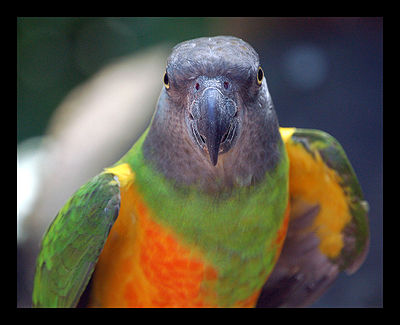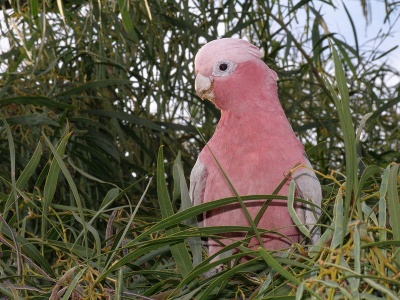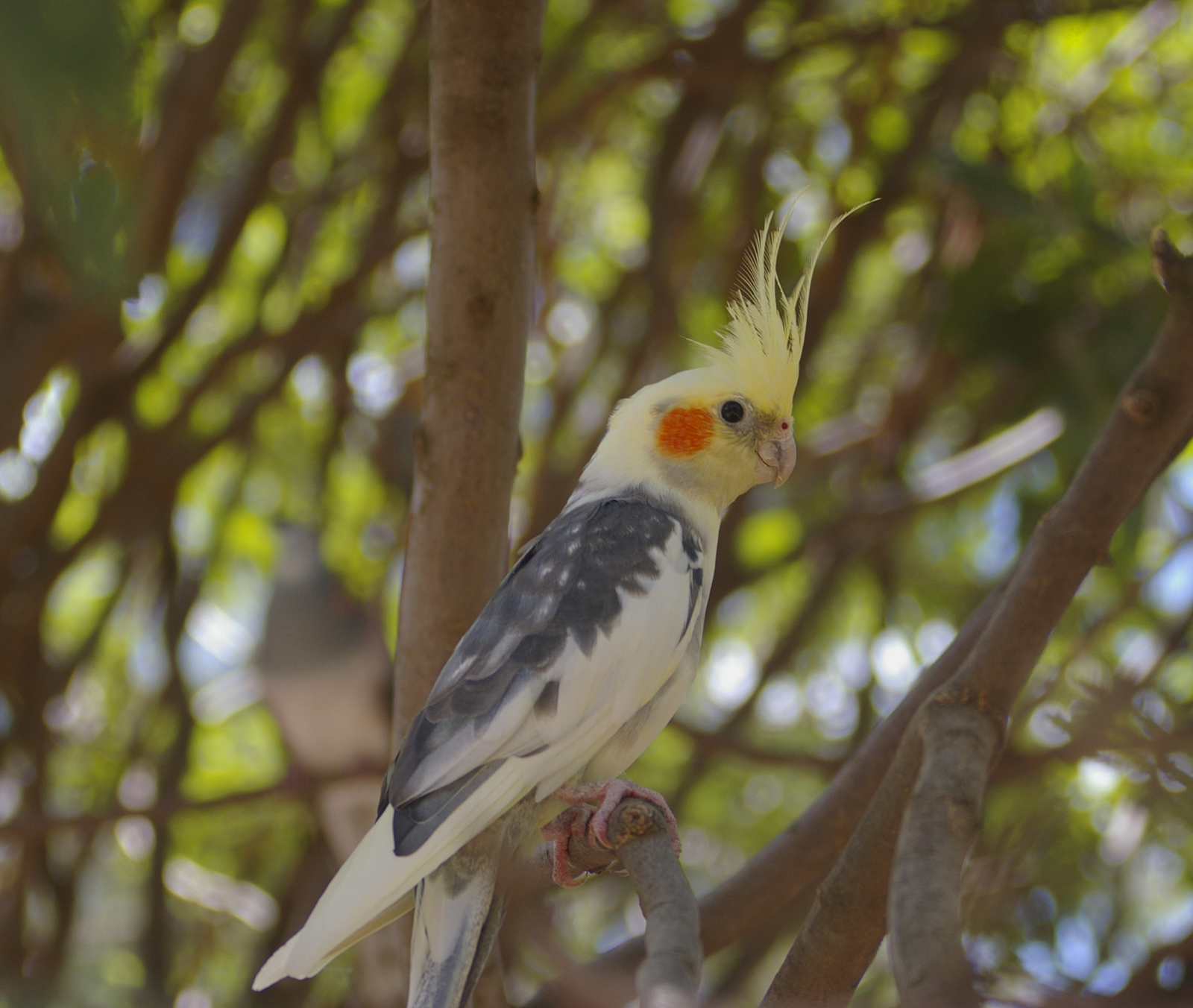
Senegal parrots are also known as Yellow-vented Parrots. These African parrots were very popular in the United States and Europe and were imported in great numbers until it became illegal in 1992.
The Senegal’s origin is Western Africa – Senegal after which it is named and nearby countries. Their natural habitats are close to the savannah and in moist woodland areas.
Senegal adults have short, broad tails and are about 9-10 inches long from beak to tail. Weight is 110-170 grams – 3.9-6 oz. The head is large compared to the size of the body. Color of the adult Senegal is a grey head, green wings, back and throat. The lower rump, breast and abdomen have a distinctive V-shaped area that is yellow to orange. The upper breast is a bright green. Males are larger and heavier than females. Lifespan is 20-30 years, although in captivity they can live close to 50 years.
Compared to other parrots, the Senegal is considered relatively quiet. However their vocalizations include high-pitched screeches, squawks and a range of whistles.
Senegals are social birds, easily trained and they adapt quickly to their environment. They usually become closely bonded with one person and may exhibit signs of jealousy and possessiveness. To avoid this behavior it’s important to socialize them early with all family members. They do learn to talk and some can have an extensive vocabulary, understanding some of what they say.
In the wild Senegals eat seeds, nuts, berries and fruits. Ready made mixes can be found in pet shops. You can add fresh fruits, veggies, greens such as cucumber, lettuce, eggplant, peas, spinach leaves, zucchini and corn, carrots, tomatoes, pineapple, apples, bananas, apricots and more. Purchase organically grown produce or wash very well to get rid of any pesticide residue. Check our list of foods toxic to birds. Fresh water should always be available.
The cage should be at least 2 feet x 2 feet x 3 feet high. Make sure the bars are close enough so the bird’s head can’t fit through them and doors are secure. Senegals love to climb and toys made of wood are their favorites. Be sure to buy wood that has not been treated. Swings, bells and ladders make good toys. Perches can be angled like tree limbs in the wild.
Maintenance includes cleaning dishes daily and discarding any uneaten food, washing the cage and contents every week or two.
Plan to spend at least an hour, more if you are able, with your Senegal so that s/he is well socialized.



